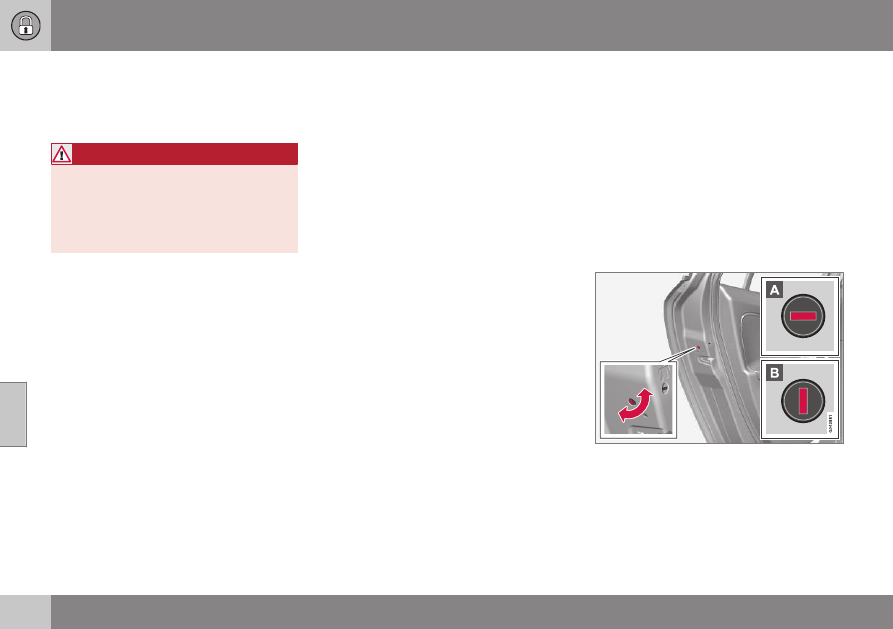Volvo S60 Inscription (2016 year). Instruction - part 8

06 Locks and alarm
06
134
*
Option/accessory, for more information, see Introduction.
Keyless drive* – antenna locations
The keyless drive system has a number of
antennas located at various points in the vehi-
cle.
WARNING
People with implanted pacemakers should
not allow the pacemaker to come closer
than 9 inches (22 cm) to any of the keyless
drive system's antennas. This is to help
prevent interference between the pace-
maker and the keyless drive system.
Related information
•
Keyless drive*– locking/unlocking (p. 131)
Locking/unlocking – from the outside
Related information
•
Locking/unlocking – from inside (p. 135)
Manual locking
In certain situations (e.g., if there is no electri-
cal current in the vehicle), the doors can be
locked manually.
The detachable key blade (p. 128) can be
used in the lock cylinder in the driver's door
to lock that door.
The other doors do not have lock cylinders
and the slot on the rear edge of each door
has to be used to lock it. This will lock the
door from the outside but it can still be
opened from inside the vehicle. To do so:
Manually locking a door
–
Insert the key blade into the slot and turn
it 90 degrees to lock that door (the slot in
a particular door locks that door only).